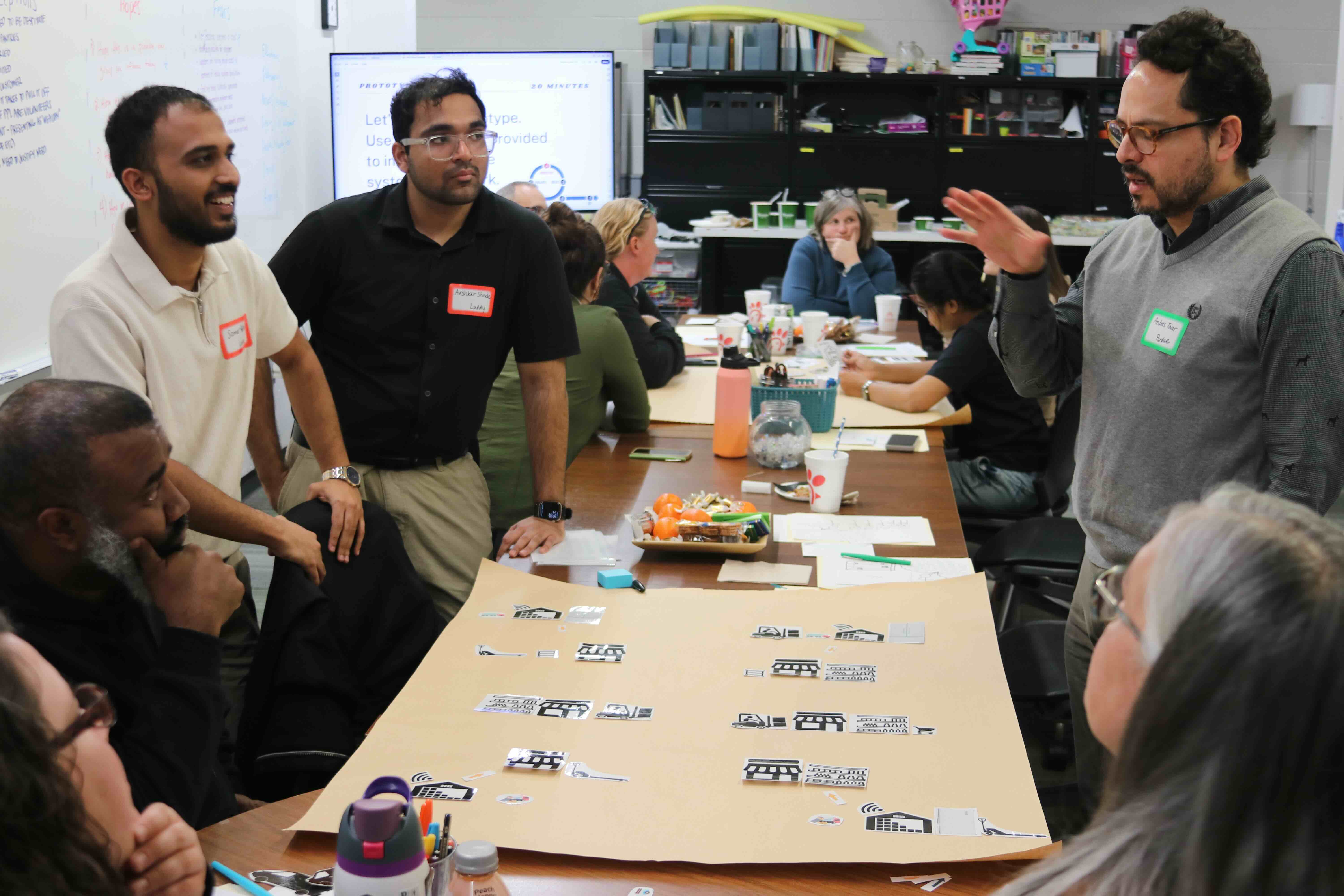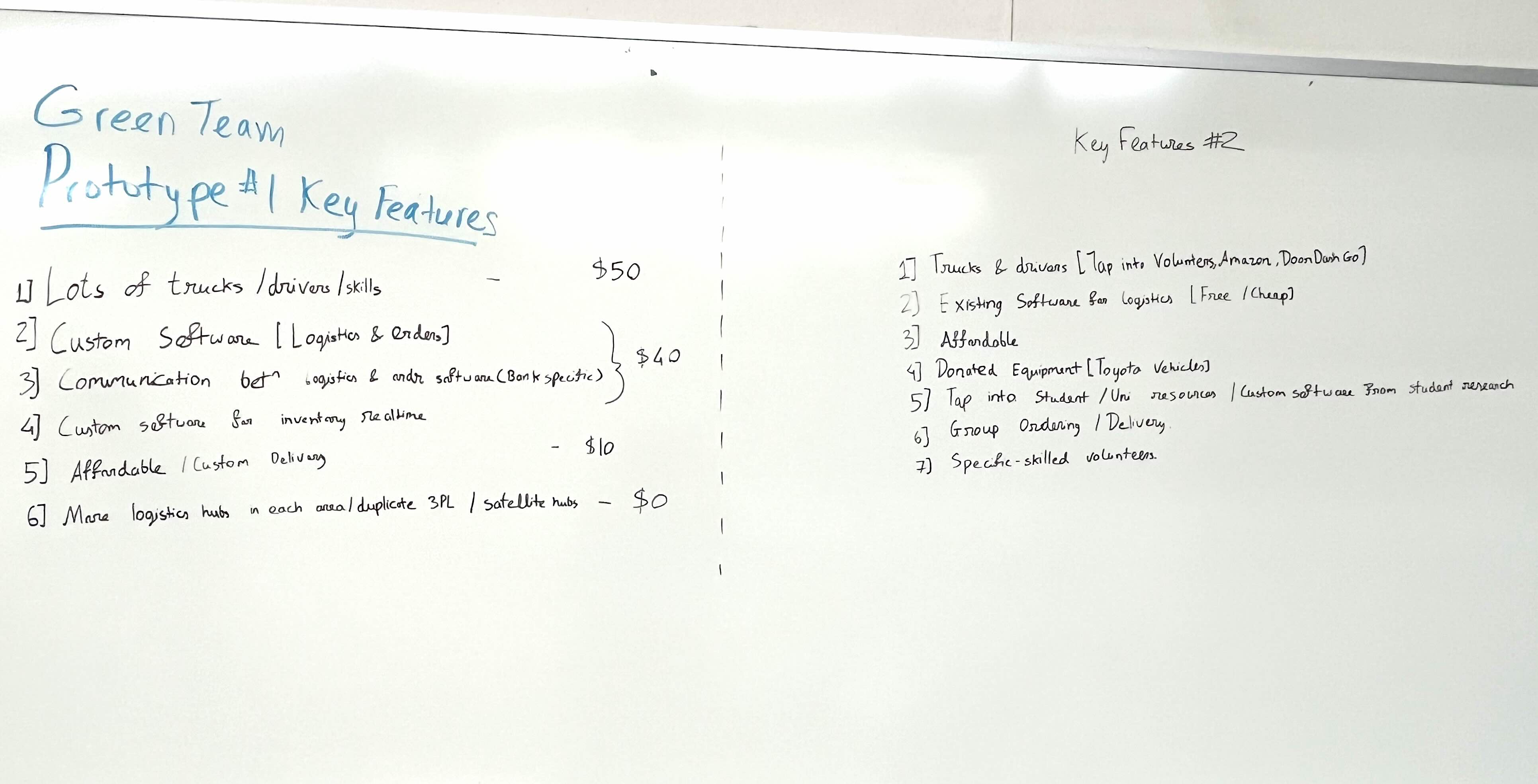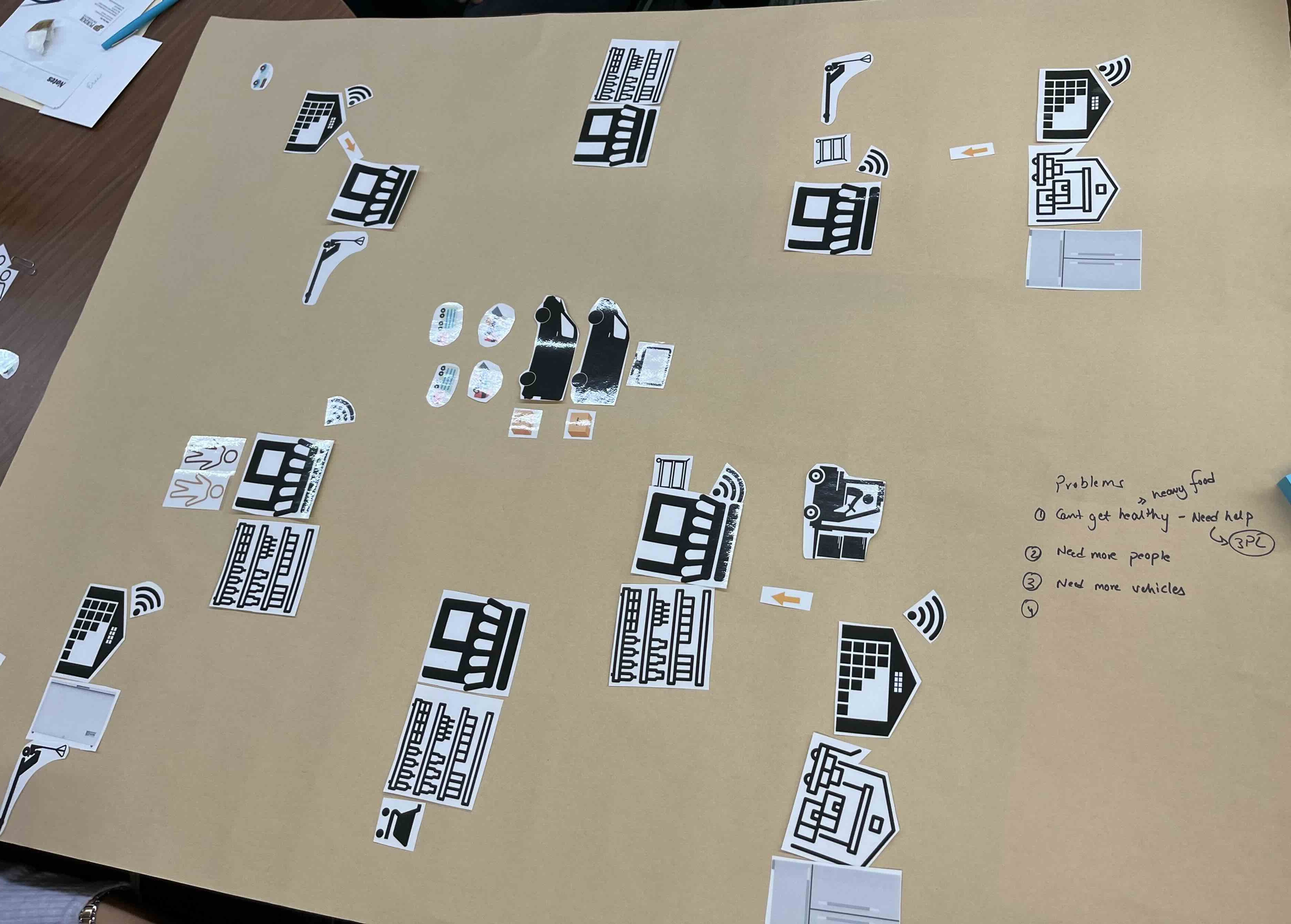Prototype 2 was created by the "Green Team" at our design workshop. They identified the following necessary features:
1. Lots of trucks and skilled drivers
2. Custom software for logistics & ordering
3. Communication between logistics & ordering software
4. Affordable delivery
5. Satellite logistics hubs
After the group discussed these features, they decided to set priorities using a theoretical budget of $100 for development to help determine each feature's relative importance. $50 was allocated to an abundance of trucks and workers, $40 to custom software for routing and ordering, and $10 to affordable delivery options. After further discussion, the group identified opportunities to source pieces of the prototype for free or low cost: having students develop and maintain software, utilizing retirees as skilled volunteers for trucking and mechanics, and asking foundation partners from Toyota to source donated vehicles. They also discussed the idea of creating "drop zones" at larger pantries in the city where smaller pantries could collaborate to pick up their orders.


